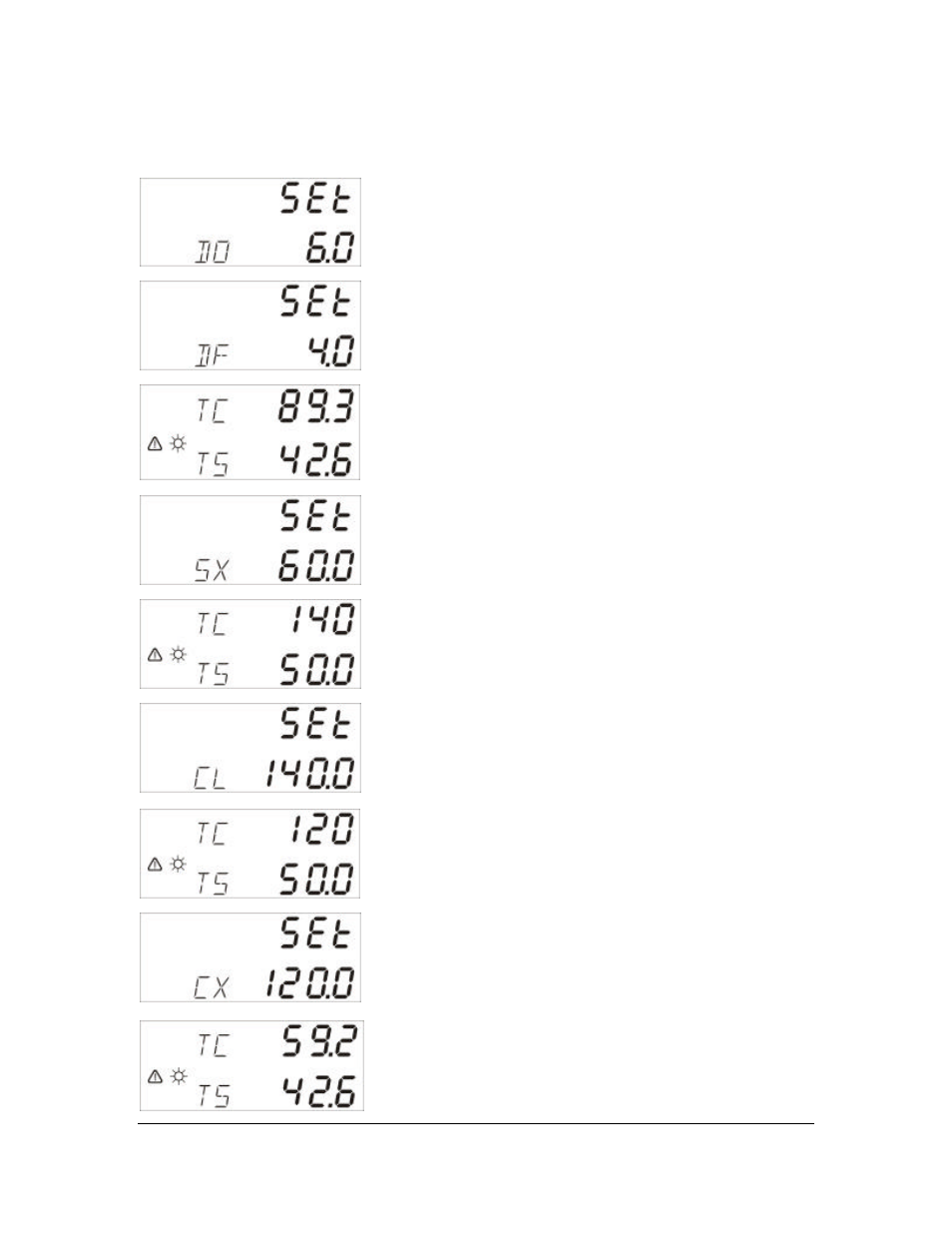Thermo Technologies USDT 3000 User Manual
Page 8

7
Examples
Delta T Adjustment -The controller monitors temperatures at
S1 and S2 locations and compares the resulting temperature
difference with delta T. The solar loop circulation pump (A1)
runs, when the measured temperature difference delta T is
higher than or identical to the set value (DO). The pump stops
at the shut off temperature (DF). The Following parameters are
factory defaults:
DO 6 °C and DF 4 °C
Maximum Tank Temperature (SX) - The solar pump A1 stops
(R1) to avoid tank overheating (safety shutdown of the tank) at
this (SX) set point. The overheating symbol flashes if the
maximum tank temperature is exceeded. The factory setting is
(see FN =3) 60 °C. To disable this protective feature of the
unit, change FN to 0.
Solar Loop Limiting Temperature - If the temperature of the
solar loop exceeds the set point temperat ure (CL), the solar
pump A1 stops (R1) in order to protect the solar components
from overheating (collector safety shutdown). The factory limit
temperature is set to 140 °C but it can be changed within the
adjustment range of 110-200 °C. The operating control lamp
flashes red if the temperature limit is exceeded.
Maximum Collector Temperature (CX) – The pump A1 stops
when the tank temperature reaches its set point (SX). The
system will stagnate. When the collector exceeds its maximum
design temperature (CX), the operating control lamp flashes
green and the solar pump A1 (R1) comes on to “cool” the
system. The tank temperature might increase above (SX), but
only up to 90 °C (safety shutdown of the tank). This function
guarantees a longer operating time for very hot summer days
and ensures a thermal relief for the collectors and the system.
The factory setting is 120 °C (shown in display), but it can be
changed within the adjustment range of 100 -190 °C.
Minimum Collector Temperature (CN) - The minimum
collector temperature is a minimum switching temperature. It
must be exceeded to turn the solar pump A1 (R1) on. The
minimum temperature reduces pump cycling at low solar
radiation times such as early morning.
